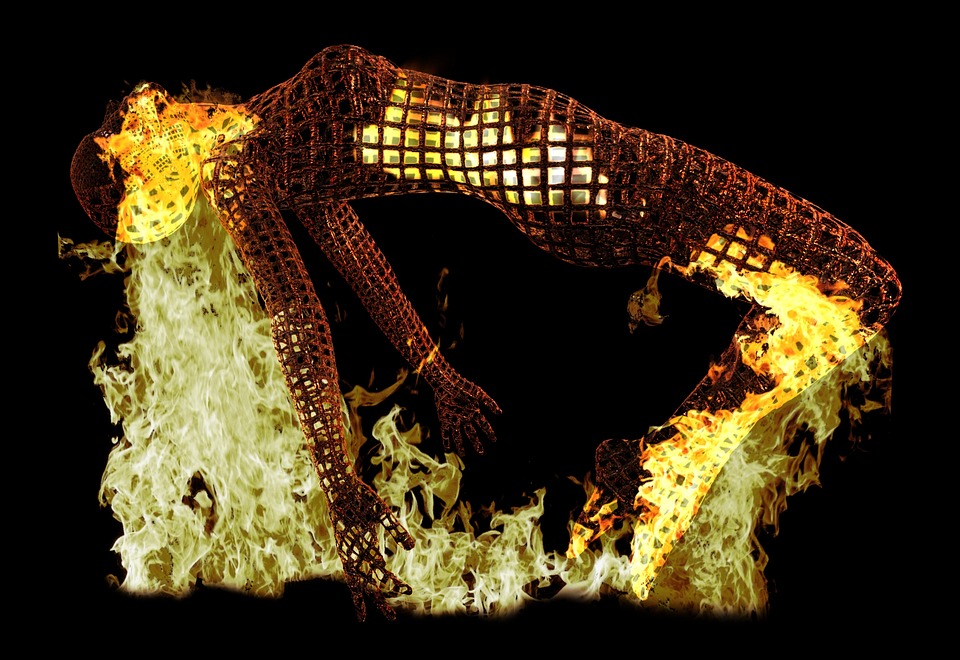One of the most difficult aspects of axial SpA (AS) is managing flares. The unpredictability in when they occur and how severe they are can make it difficult. Having a plan of all the ways you can manage a flare can help reduce some of the stress and hopefully ease the flare itself.
What is a Flare?
Every person with axial SpA (AS) feels flares differently and, in fact, no two flares are the same even for the same person! Flares can cause pain, stiffness and fatigue.
Pain can be due to:
- Active inflammation in tissues around joints and tendons
- Shortening or tightening of muscles
- Protective muscle spasms
Stiffness can be due to:
- Active inflammation in and around joints
- Muscles and tendons shortening and tightening
- New bone growth in the joints of the spine and pelvis (usually over a long period of time)
Fatigue can be due to:
- Chemicals released by the body during the inflammation and healing cycle
- Muscle tightness
- Disrupted sleep
- Stress from living with a chronic and inflammatory condition
- Low mood and anxiety
Flares can be localised to a particular area or joint, or they can be generalised with more overall symptoms such as fatigue. The management of each will differ slightly, so having lots of options in your flare care plan will ensure you’re well equipped to deal with them.
It’s unknown what causes flares, but some people do notice a pattern and can identify potential triggers, such as physical or emotional stress.
Hot and Cold
Using a heat pad or hot water bottle wrapped in a towel on a painful area for ten minutes can be really soothing for a localised flare. For a more general flare, using an electric blanket, heated jacket, hot shower or bath can be very effective.
An ice pack or bag of frozen peas wrapped in a towel and placed on a painful area for 5-10 minutes can numb the area and provide some short-term pain relief.
Massage
Massaging the muscles surrounding a sore or stiff joint can help ease the pain and stiffness. You can use the heel of your hand, a tennis ball or a spikey massage ball. Apply a gentle pressure in small circular movements for around 30 seconds. This can be particularly helpful after applying heat locally and just before going to sleep.
Stress Management
Some people find that emotional stress can trigger a flare and it’s always important to manage your mental wellbeing, particularly during a flare up. There are lots of different ways to do this, including:
– Meditation
– Mindfulness (e.g. Headspace app)
– Speaking to someone you trust
– Support group (in person or online)
– Counseling
The NASS mood bands help you communicate with family and friends. You wear the green band on a good day, orange band on an ‘okay day’ and red on a ‘flare/bad day’. This can help family and friends know if you need any support or assistance. These will be on sale in the coming months.
Breathing Techniques
Breathing techniques can be really helpful for back/rib pain and stiffness, as well as promoting relaxation. Try different breathing exercises to see what works for you.
Exercise
It may feel like the last thing you want to do, but movement and exercise can help ease the severity and length of a flare. It’s recommended to avoid high impact exercise during a flare, but helpful activities may include:
– Walking
– Swimming/hydrotherapy/aqua aerobics
– Cycling (static bike or outdoors)
– Cross trainer or rowing machine
– Yoga, Pilates, Tai Chi
Try doing small amounts of movement regularly throughout the day to limit the effects of fatigue.
Helping Your Sleep
Flares can prevent you from sleeping comfortably and aggravate fatigue. You can read all about helping your sleep in this previous blog.
Nutrition
It’s recommended to keep a balanced, healthy diet. While flaring it can be difficult to prepare food, so batch cooking some meals and freezing them can help prepare for times when you have less energy. It’s important to eat frequently throughout the day or have some healthy snacks (nuts, fruit, veg etc) to keep your energy levels up.
Medication
Speak to your rheumatologist or GP to create a plan of how you can alter your medication for a flare. It’s important to know what the maximum safe dose is and how frequently you can take them. Write the plan down and keep it somewhere visible as a reminder of what you can take when needed.
During a flare, note down what time you take a medication and the dose to ensure you keep track.
TENS Machine
TENS machines can help manage pain, allowing you to be more active or sleep better. Speak to your GP or physiotherapist to see if this would be suitable for you.
Pacing
Pacing is always important in managing your axial SpA (AS), but even more so during a flare. It can be frustrating, but pacing your activities and breaking them down into smaller tasks can help you do more during a flare without overdoing it. It’s natural this will change over time and as the flare eases you will be able to do more, so listen to your body.
Mental Health
It’s essential to look after your mental health, especially during a flare. If you’re struggling, speak to someone you trust or call the Samaritans confidential Helpline. Finding something to focus on, like a small goal for the day can be beneficial. Some people focus on the here and now during a flare, while others prefer to focus on the near future and imagine how things will be when the flare ends (without putting pressure on themselves). Find what works for you, because everyone has different coping strategies and these often vary over time.
Distraction
Taking your attention away from the pain or fatigue can help give you a break for a period of time. The activity you’re able to do will depend on the nature of your flare, but may include:
– Reading or audiobooks
– Music
– Podcasts
– Journaling
– Colouring
– Arts and crafts
– TV and films
– Puzzles
Practical Tips
Make a flare care plan in advance and write it down. Include the phone number for your GP, rheumatology Helpline number and your hospital number. Keep it somewhere prominent, for example beside the bed, on the fridge or next to the bathroom mirror. When you’re in the middle of a bad flare, it’s easy to forget the things that normally help or the medication you’re able to take. Having a plan where you’ll definitely see it can be a huge help.
If you’d like a creative project, why not create a flare book? You can include all the essential information, self care strategies that help you, as well as images and text that keep you positive and inspired.
When is a Flare not a Flare?
Flare ups of symptoms that are more severe or last longer than usual can sometimes be a sign that axial SpA (AS) is not controlled well enough and could be worsening. If your flares aren’t well controlled or if they last longer than usual, consult with your rheumatologist for advice.
Summary
The biggest advice I can give is to remember that the flare will pass and be kind to yourself. It’s important to take time during a flare and look after your physical and mental wellbeing. Hopefully some of these tips will help you create a care plan and also reduce the frequency of flares. Please share your tips in the comments below.
Zoë Clark is an osteopath living with axial SpA herself and has joined the NASS Helpline team to help with the unprecedented demand over COVID-19. You may have seen her blog posts previously written for NASS and she spoke at the latest parliamentary meeting in January and appeared on Channel 5 News. She’s joining the NASS team to help you keep active and feeling well during this difficult time of isolation.
Zoë is available on the Helpline each day, so if you’d like to have a chat then please get in touch and we can arrange a call. She’ll also be sharing some of her top tips and answering any common questions, so please let us know in the comments if there’s any particular advice you’d like.
The Helpline is open 1000-1600 Monday to Friday on 020 8741 1515 or you can email zoe@nass.co.uk



